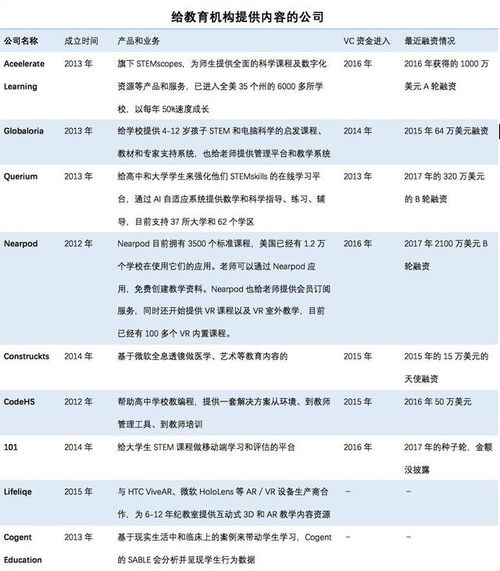Title: Understanding STEM Education Policies in the United States
Introduction to STEM Education Policies
STEM (Science, Technology, Engineering, and Mathematics) education has garnered significant attention worldwide as nations strive to prepare their workforce for the challenges of the 21st century. In the United States, STEM education policies play a crucial role in shaping curriculum standards, teacher training, funding allocations, and initiatives aimed at fostering interest and proficiency in STEM disciplines among students.
Historical Overview
The roots of STEM education policies in the United States can be traced back to the mid20th century, with the launch of initiatives such as the National Defense Education Act (NDEA) in 1958, which aimed to enhance scientific education and technological skills in response to the Soviet Union's successful launch of Sputnik. Since then, various administrations and educational organizations have introduced numerous policies and programs to bolster STEM education at all levels.
Key Components of STEM Education Policies
1.
Curriculum Standards
: STEM education policies often emphasize the development of rigorous and relevant curriculum standards that integrate science, technology, engineering, and mathematics across disciplines. Initiatives such as the Next Generation Science Standards (NGSS) and the Common Core State Standards (CCSS) have sought to provide a framework for cohesive and comprehensive STEM education.
2.
Teacher Preparation and Professional Development
: Recognizing the pivotal role of educators, STEM education policies prioritize teacher preparation and ongoing professional development. This includes initiatives to recruit and train highly qualified STEM teachers, as well as programs to support their continued growth and proficiency in STEM pedagogy.
3.
Equity and Diversity
: Addressing disparities in access to quality STEM education is a central focus of many policies. Efforts to promote equity and diversity in STEM fields aim to broaden participation among underrepresented groups, including women, minorities, and students from lowincome backgrounds. Programs such as the Minority Science and Engineering Improvement Program (MSEIP) and Title I funding initiatives seek to reduce barriers and foster inclusivity in STEM education.
4.
Partnerships and Collaborations
: Collaboration between educational institutions, government agencies, industry partners, and community organizations is essential for the success of STEM education policies. Publicprivate partnerships, mentorship programs, and extracurricular activities help provide students with realworld experiences and connections to STEM professionals.
5.
STEM Enrichment and Outreach Programs
: Beyond the traditional classroom setting, STEM education policies support a variety of enrichment and outreach programs. These initiatives, including STEM clubs, competitions, summer camps, and maker spaces, aim to spark interest, creativity, and innovation among students and cultivate a passion for lifelong learning in STEM disciplines.
Challenges and Future Directions
Despite significant progress, challenges persist in the implementation and impact of STEM education policies in the United States. These challenges include:
1.
Access and Equity
: Disparities in access to quality STEM education resources and opportunities remain a pressing concern, particularly for marginalized communities and underserved schools.
2.
Teacher Shortages
: Shortages of qualified STEM teachers, particularly in highneed areas and specialized fields, pose a significant barrier to effective STEM education implementation.
3.
Integration and Interdisciplinary Learning
: Achieving seamless integration of STEM disciplines and promoting interdisciplinary learning requires ongoing collaboration and curriculum innovation.
4.
Workforce Preparation
: Aligning STEM education policies with the evolving needs of the workforce and emerging industries is essential for preparing students for future careers in STEM fields.
Looking ahead, future directions for STEM education policies in the United States may include:
1.
Continued Investment
: Sustained investment in STEM education at the federal, state, and local levels is essential for supporting innovative programs, resources, and infrastructure.
2.
Focus on Equity
: Prioritizing equity and diversity in STEM education policies to ensure that all students have access to highquality learning experiences and opportunities for success.
3.
Enhanced Teacher Support
: Providing comprehensive support and professional development opportunities for STEM educators to enhance instructional practices and address teacher shortages.
4.
Promotion of Innovation and Entrepreneurship
: Encouraging entrepreneurship, innovation, and handson learning experiences to foster creativity, problemsolving skills, and entrepreneurial mindsets among students.
Conclusion

STEM education policies in the United States play a critical role in preparing students for success in an increasingly complex and technologydriven world. By prioritizing equity, innovation, and collaboration, policymakers can ensure that all students have access to the knowledge, skills, and opportunities needed to thrive in STEM fields and contribute to a globally competitive workforce.
References
:
National Science Foundation (NSF) https://www.nsf.gov/
U.S. Department of Education https://www.ed.gov/
Next Generation Science Standards (NGSS) https://www.nextgenscience.org/
Common Core State Standards (CCSS) http://www.corestandards.org/
Minority Science and Engineering Improvement Program (MSEIP) https://www2.ed.gov/programs/iduesmsi/index.html





